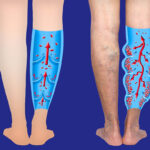
Endovascular Treatment For Acute Ischemic Stroke
Acute ischemic stroke is a condition that occurs when there is a blood clot in an artery supplying the brain. This clot blocks the blood supply of the brain leading to stroke. Endovascular treatment is one of many treatment options after a stroke.
What is the endovascular treatment for stroke?
An endovascular thrombectomy is a procedure of removing a thrombus (blood clot) under image guidance. Mostly endovascular thrombectomy is performed when the blood clot is large and cannot be completely dissolved by medicines.
After you suffer from a stroke your doctor may recommend endovascular treatment for it. Endovascular treatment should be performed as soon as possible after the stroke. This procedure is used to remove the clot which is responsible for causing stroke and resuming the normal blood supply in the brain.
What is the procedure for endovascular treatment?
This procedure is performed by an interventional radiologist. The doctor will insert a thin tube into the base of your skull or groin. With the help of an x-ray, he will guide this tube to the blood clot. Different techniques can be used to remove clots after that. Clots can be removed with the help of a vacuum which can suck the thrombus out. Mechanical instruments can also be used to break the clot and then remove it. The devices which are used in this technique are inserted through that thin tube into the affected artery.
Medications can be delivered directly to the brain.
With the help of the long thin tube inserted by the doctor, medicine is directly delivered to the affected artery. This medicine helps dissolve the clot. If the clot is big, medicine will dislike the clot and reduce its size so that it is easily removed.
Removing the clot with a stent retriever.
For the large clots, Doctors can use a device that is attached to a catheter. This device can directly remove the clot responsible for causing the stroke. This is typically used for large clots which cannot be dissolved by medicines. This method is often performed in combination with injected medications.
The time window is very important in the clinical outcome of the treatment. The effect of treatment is more if it is performed within 3-6 hours after the stroke. Though with newer imaging systems and advancements in equipment this time window is increasing.
What are the risks?
There can be bruising at the puncture site in the neck or groin area. The major risk includes the risk of bruising of a blood clot deep into the artery while performing the procedure. This can make the treatment more complicated. Rarely, it can cause bleeding in the skull while performing the procedure. In such situations treatment is stopped immediately. Our center offers you world-class facilities and the latest equipment for the best endovascular treatment of acute ischemic stroke.
Stroke recovery and rehabilitation
After the procedure, the doctor will closely monitor you for a few days. The important aspect of stroke care is to restore the functions so that the patient can return to normal life as soon as possible.




